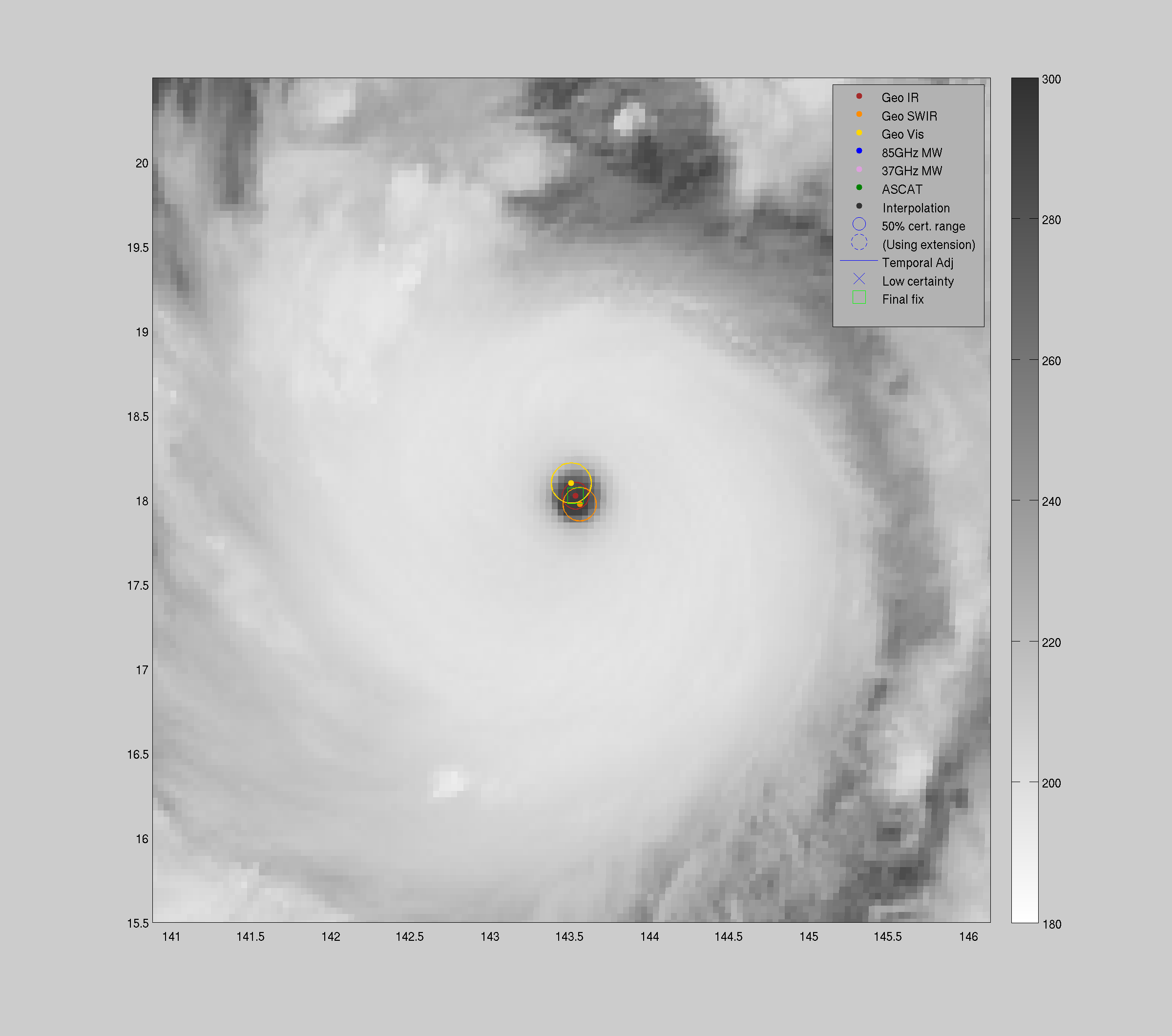
[ Archive ]

 |
CIMSS-NOAA Weekly Report [ Archive ] |
 |
ASPB AND CIMSS WEEKLY HIGHLIGHTS FOR THE WEEK ENDING SEPTEMBER 7, 2018
IN THE PRESS:
SSEC and CIMSS Scientists in the News: Scientists at the University of Wisconsin-Madison (UW) Space Science and Engineering Center (SSEC) and the Cooperative Institute for Meteorological Satellite Studies (CIMSS) provide expert commentary, interviews, and imagery to news media. In the news this week: 1) SSEC News published, "Center of the storm: A global analysis of hurricane eyes," on CIMSS scientists Tony Wimmers and Chris Velden's contributions to an analysis of hurricane eyes over a 34-year period (https://www.ssec.wisc.edu/news/articles/11238). 2) CIMSS scientist Shane Hubbard, an expert on modeling at-risk and vulnerable infrastructure during hazardous weather events, was the UW News featured expert available to discuss the impact of recent flooding in Wisconsin (https://experts.news.wisc.edu/experts/shane-hubbard) and was interviewed this week by the Cap Times (https://go.wisc.edu/2wb3j5), WKOW's Capital City Sunday (https://go.wisc.edu/o40fw1), and WORT FM Local News. 3) CIMSS Satellite Blog contributors Scott Bachmeier and Scott Lindstrom published posts on "Delta Fire pyroCumulonimbus cloud in CA" (September 5), "Tropical Storm Gordon" (September 3 and 4), "Fog and stratus dissipation in the San Francisco Bay area" (September 3), and "Snow cover in the Brooks Range and North Slope of Alaska" (September 2). Read more at the CIMSS Satellite blog (https://cimss.ssec.wisc.edu/goes/blog/). (J. Phillips, SSEC, 608-262-8164, S. Hubbard, CIMSS, S. Bachmeier, CIMSS, S. Lindstrom, SSEC)
 (Click image to enlarge)
(Click image to enlarge)
Figure caption: The Automated Rotational Center Hurricane Eye Retrieval (ARCHER) algorithm, used here to analyze Typhoon Jebi, allows the interrogation of large satellite datasets in a short amount of time and is an operationally-viable option for hurricane analysts to pinpoint and characterize hurricane eyes in real time. Credit: CIMSS
ITEMS FOR THE ADMINISTRATOR:
ITEMS FOR THE ASSISTANT ADMINISTRATOR:
ITEMS FOR THE OFFICE DIRECTOR, STAR:
GOES-17 ABI Images Now Available Online and in RealEarth: The Cooperative Institute for Meteorological Satellite Studies (CIMSS) at the University of Wisconsin (UW)-Madison is routinely generating images to display the 16 spectral bands of the GOES (Geostationary Operational Environmental Satellite)-17 Advanced Baseline Imager (ABI) for display online. There are 16-panel displays, including time-difference images, which can be animated over the course of a day for both "CONUS" and "Full Disk" scan sectors, beginning with the first GOES-17 ABI images sent via GOES Rebroadcast (GRB) at http://cimss.ssec.wisc.edu/goes-r/abi/?action=view_data&ms=satellite,date,region,parameter&m_values=goes17,20180906,fd,16panel. Also, all GOES-17 ABI data for all sectors are available in realtime via the RealEarth visualization tool at http://realearth.ssec.wisc.edu/ and in the GOES-R App powered by RealEarth, available for mobile users. These tools are used by analysts to both monitor the weather and to detect and diagnose anomalies with the calibration, data stream, ground system, and processing software. (T. Schmit, E/RA2, 608-263-0291, tim.j.schmit@noaa.gov, J. Nelson, CIMSS, R. Dengel, CIMSS, M. Gunshor, CIMSS)
(Click image to enlarge)
Figure caption: The 16 bands of GOES-17 ABI at 18:05 UTC on 06 September 2018 from a Mode4 Full Disk.
ITEMS FOR THE DIVISION CHIEF, CoRP:
STAR Senior Leadership Retreat: This week, the Cooperative Institute for Climate and Satellites in College Park, MD (CICS-MD) hosted the STAR Senior Leadership Retreat. STAR Cooperative Research Program (CoRP) Branch Chiefs Jeff Key, Ralph Ferraro, and Don Hillger attended the event, which was held September 5 to 7. The sessions were led by Lynne Carbone of Lynne Carbone & Associates. Dr. Stephen Volz, NOAA Assistant Administrator for Satellite and Information Services, gave a talk at the start of the first day to explain the goals and expectations for the new STAR Strategic Plan. At the conclusion of the retreat, an outline of the plan was developed and will be further developed into a full document over the next few months. (J. Key, E/RA2, 608-263-2605, jeff.key@noaa.gov)
VISITORS:
Met Office Visitor: Dr Douglas Boyd visited SSEC on 4- 5 September and presented a seminar on “The Unified Model and Pending Updates.” He also spent time with scientists explaining the various modules needed to run the current parallel suite of the operational model. Further discussions focused on the advantages of assimilating 15 minute ABI clear sky radiances and atmospheric motion vectors in a regional version of the atmospheric model. The Met Office is planning to transition to an Exascale version of the Unified Model using a cubed sphere coordinate system in 2024. (P. Menzel, CIMSS, 608-263-4930, paulm@ssec.wisc.edu)
NEXT WEEK:
LOOKING AHEAD:
| Archived Weeklies Page | Submit a report item |